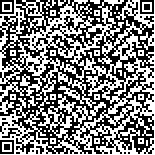下载中心
优秀审稿专家
优秀论文
相关链接
摘要

提出农作物长势综合监测方法,利用卫星遥感得到的NDVI时间序列数据,综合采用实时监测、过程监测和时间序列聚类监测方法,明确不同方法适用的监测尺度及监测目的,对不同范围农作物长势进行监测.改进了CropWatch全球农情遥感速报系统运行化作物长势监测方法,克服了原有作物长势监测中实时监测方法无法反映相同区域苗情在整个生长过程中的连续变化情况的缺点.实现对相同区域作物长势连续变化的定量描述,可对作物长势进行更准确的判断.利用官方发布的作物单产变幅数据,对单产变幅较大的12个作物主产省区作物长势监测结果的准确性进行判断,结果表明:6个邦的实时监测和聚类监测方法所得结果一致,都符合作物单产变化的实际状况;4个邦的聚类监测方法所得结果对作物长势监测更为准确,更符合该区域作物单产的实际变化;1个邦实时监测结果对作物长势监测比聚类监测方法更为准确;只有1个邦采用两种方法对作物长势的监测存在误差,聚类监测方法在对农作物生长过程的连续监测及空间分布的定量化表述方面,比实时监测更为准确.3种方法可以综合使用,实现业务化运行的农作物长势监测.
Monitoring crop condition can provide near real-time information on crop growth and reflect diverse information on crop yield before harvesting. Time series clustering method was employed to improve crop condition monitoring in the CropWatch global crop monitoring system. The scale suitability of methods in the CropWatch system was evaluated. Yield data covering the 12 main producing states in India were selected to validate the accuracy improvement obtained by clustering method.
Process, real-time, and time series clustering methods were employed in this research. All these methods were based on the comparison of Normalized Difference Vegetation Index (NDVI). Process method used the regional average of NDVI to develop crop growth profiles across the growing period and to compare the current profile with that of previous years or selected period. Real-time method used the difference of two NDVI images that represent different periods to identify the distribution of crop conditions, i.e., poor, better, or maintain balance. Clustering method used a time series of NDVI, compared the time profiles of all the pixels, and categorized these profiles into different homogeneous types.
Among the selected main producing areas in India, six states have consistent results achieved by real-time monitoring method and clustering method. The actual variations in yield can be explained clearly in the crop condition monitoring by the two methods. Clustering method obtains more accurate crop condition results than real-time monitoring in four states. The clustering results can better describe yield variation. On the contrary, real-time monitoring obtains more accurate crop condition in one state. Only one of the 12 selected states has an inaccurate crop condition description provided by both real-time monitoring method and clustering method. Clustering method is more accurate than real-time monitoring method in continuous monitoring and quantitative expression for the spatial distribution of crop condition.
Process monitoring describes the regional crop growth across the growing period as a whole, whereas real-time method and time series clustering method can be used to show the spatial distribution of different crops. All these methods are consistent with one another in essence, but their scope suitability and aims are different. For provinces or smaller areas, process method performs well. For countries or continents, noises exist in the profiles because of the disturbance from crops in different areas. Real-time method can be applied to any scope to describe the regional crop growth difference in selected discrete time. As for the time series clustering method, it can be used to quantitatively describe crop growth and the distribution of corresponding types and performs better than real-time method.

